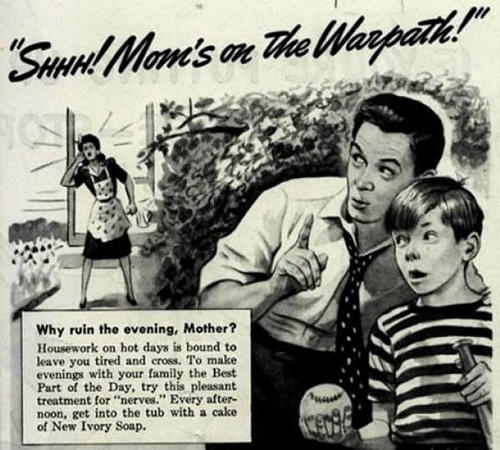On Headship and Households

September 24, 2015
Denny Burk says he would like to see more discussion on how the “headship norm” established in Genesis 2 as a “creation norm” informs one’s view on maleness and femaleness. In his response to the questions and challenges we at MoS have raised to some of the popular teachings within complementarianism , Burk says:
To be fair, I think complementarians have a lot of work to do in this area. The Danvers Statement itself is pretty limited in its application to the church and home. But its minimalism is not consistent with its own first principles when those two domains are deemed the only relevant domains for living out manhood and womanhood.
 While pushing back at Carl’s claims that Piper’s teaching on complementarianism “focuses ‘almost exclusively on issues of authority, hierarchy, and submission,’” this is exactly what he is concluding with by saying that the “headship norm” is extended beyond church and home and directly correlated to our manhood and womanhood.
While pushing back at Carl’s claims that Piper’s teaching on complementarianism “focuses ‘almost exclusively on issues of authority, hierarchy, and submission,’” this is exactly what he is concluding with by saying that the “headship norm” is extended beyond church and home and directly correlated to our manhood and womanhood.But what is the teaching in Genesis on this issue, and how is it further brought to light in the New Testament? We should first point out that God made man and woman in his own image (Gen. 1:27).* And in this garden/temple/household of Eden, the overarching theme between Adam and Eve is not authority and submission, but unity in one flesh. I am not saying that Adam was not set as the head of the household, but that the point is unity.
That unity is disrupted in the Fall. And after the Fall, we have the division of the holy from the common. Adam and Eve are expelled from the garden/temple. The temple, the home, and the civil community will now be separate. And yet, we see later in Scripture that the church is referred to as the household of God (1 Tim. 3:15).
Burk is right that there are many questions left about the mystery of manhood and womanhood, and how that all plays out in culture. Neither Carl nor I deny there are many differences between the sexes, some cultural, and some innate. But I do deny that male headship is imperative to living out my womanhood in civil society. I believe headship is a factor when it comes to household order, and I do not believe that headship is a micromanaging role.
The Household Manager
Gregory Beale has done some great work on Christ as household manager and how that connects to the first married couple in his book Hidden But Now Revealed. This is certainly not a book about gender roles, but his teaching sheds some light to this question. He has a chapter dealing with the use of the word “mystery” in Ephesians where he says, “Paul casts his net wide in Ephesians 1 and then tightens it as he progresses through the letter” (148). So Beale begins in quoting Ephesians 1:3-14, honing in on v. 9-10a (NASB):
He made known to us the mystery of His will, according to His kind intention which He purposed in Him with a view to an administration suitable to the fullness of the times, that is, the summing up of all things in Christ, things in the heavens and things on the earth.
Beale explains:
The mystery has to do with Christ overseeing a “household management” (or “administration,” oikonomia) of the “fullness of times” that refers to the latter days (Eph. 1:10a).
…In other words, Paul tells us what part of the revealed mystery is (!) “a household management---the summing up of all things in Christ, things in the heavens and things on the earth.” (150)
God’s cosmic household had fallen into disorder and became wrecked and fragmented. Christ came as a household manager to put God’s cosmic household back into order. The main focus of the revelation of the mystery is that Christ is the point of reintegration and restoration of the original cosmic unity and harmony that had been lost at the fall of humanity, a fragmentation that had affected nor only earthly but also the heavenly realm. (151)
Beale shows the “tightening” throughout the chapter that Paul does on the content of the mystery as the epistle continues. His section on Ephesians 5:30-31 turns on the use of Genesis 2:24, quoted in Ephesians 5:31, right before Paul says this is a profound mystery:
The revealed mystery occurs in the midst of what is labeled a “household code” (see Eph. 5:22—6:9; so also Col. 3:18—4:4). The designation “household code” refers to a Greco-Roman social understanding of the ancient family structure that entails proper relationships between the members of the family household order. Scholars often find strong conceptual links between the Greco-Roman household codes and those found in Ephesians 5-6 and Colossians 3-4. What must be kept in mind, however, is the code’s relationship to the end-time people of God as the new creational community. The household code is intimately bound up with the gospel and believer’s relationship to it (Eph. 5:1-21). In this respect, Ephesians 1:10 says that Christ’s “summing up of all things” was for a household management at the “fullness of times.” Accordingly, Christ has come to restore the household of creation as “household manager.” In addition to restoring people groups in the cosmic household, Christ has also come to put back together the fragmented relationships of the individual family households: husbands and wives, parents and children, and slaves and masters. (173-174)
In these “household code” verses in Ephesians 5, we have responsibilities laid out for the wife and husband, with reference to the first husband and wife in Genesis 2:24.
The logic of Genesis 2:23-24 is the following: woman is man’s intimate partner and companion, so much so that they are a unity (Gen. 2:23); therefore..., marriage is the ultimate expression of this creational relationship (Gen. 2:24).
…it is only within the context of marriage that the first man and woman achieve relational balance and union. (175)
This is interesting, because we know that on the new heavens and the new earth, we will not be given in marriage (Matt. 22:30). The church is the bride of Christ, and we wait for the consummation on that great day. Will men be less manly in the resurrection because they will not be the head of a woman? Of course not! And what will the headship roles be that we are given in God’s consummated household where temple, garden, city, and home are once again united in holiness? I do not know. But I think something Hannah Anderson has said in her book, Made for More, is important as we are preparing for that day, "When we craft our learning and discipleship programs around being 'women,' we make womanhood the central focus of our spiritual pursuit instead of Christ" (105).
Beale makes the case that “Gen. 2:24 is the fountainhead of Israel’s conception of marriage and serves as the paradigmatic expression of marriage” (175, emphasis his), and that is then metaphorically implied to God and his dealing with Israel in the OT (Isa. 61:10, 62:2-5 4 Ezra 10), including God's end-time marriage relationship with Israel in the latter days. Ephesians 5 then applies the Lord's relationship with Israel to Christ's relationship with the church. "Christ becomes identified with the Lord, and the church is identified with true end-time Israel" (180, emphasis his). So Adam and Eve's union in marriage "typologically corresponds to Christ and the church" (181, emphasis his).
Beale puts Paul's teaching on marriage within the Greco-Roman household code of proper relationships between the members of the family being a sign of social order, and places that under the umbrella of the mystery revealed in Eph. 1:10, of Christ overseeing a household management..."the summing up of all things in Christ, things in the heavens and things on the earth."
So we see that as household manager, Christ is working in both God’s household and family households as he is summing up all things. So what is it that the head of a household does here in these last days? And when we are talking about elders in God’s household and husbands in family households, what is their responsibility in authority and leadership? I will discuss that in my next article on 1 Timothy 1:3-5.
*Hannah Anderson has written a great book on this called Made for More




